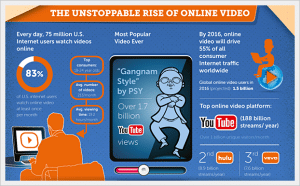Creating high-quality content is essential for any business or organization looking to engage their audience and achieve their goals. Whether you are looking to increase brand awareness, drive traffic to your website, or generate leads, producing “great” content is key to success.
In this article, we will provide five tips for producing top-notch content that will help you to achieve your goals. These tips include starting with a clear goal, using a conversational tone, including keywords and phrases, using headings and subheadings, and editing and proofreading.
By following these tips, you can create content that is engaging, informative, and effective, and that will help you to achieve your goals.
Table of Contents
1. Start With A Clear Goal
Having a clear goal is essential for the success of any content creation effort. It helps to provide focus and direction, and allows you to measure the effectiveness of your work. Without a clear goal, you risk creating content that is unfocused and lacks purpose, which can lead to a lack of engagement from your audience and ultimately be a waste of time and resources.
So, how do you go about setting a clear goal for your content creation efforts? Here are a few tips to consider:
- Identify your target audience: The first step in setting a clear goal is to identify who you are trying to reach with your content. This could be a specific demographic, such as young professionals or parents, or a particular group of people with a shared interest or need. Understanding your target audience will help you to create content that resonates with them and meets their needs.
- Determine your objectives: Once you have identified your target audience, the next step is to determine your objectives. What do you want to achieve with your content? Do you want to increase brand awareness, drive traffic to your website, or generate leads? Whatever your objectives are, make sure they are specific and measurable. This will allow you to track your progress and see the impact of your efforts.
- Set clear metrics: In order to determine whether your content is achieving your goals, you need to have a way to measure its effectiveness. This could be through metrics such as website traffic, social media engagement, or leads generated. Identify the key metrics that will help you to measure the success of your content, and track them regularly to see how you are doing.
- Make a plan: Once you have identified your target audience, determined your objectives, and set clear metrics, the next step is to create a plan for how you will achieve your goals. This could include creating a content calendar, identifying the types of content you will create, and determining who will be responsible for creating and promoting the content. Having a clear plan in place will help to ensure that you are consistent and focused in your efforts.
By starting with a clear goal, you can create content that is more likely to achieve your desired outcomes. Whether you are looking to increase brand awareness, drive traffic to your website, or generate leads, having a clear goal will help to provide focus and direction, and allow you to measure the effectiveness of your work. So, it is always recommended to start with a clear goal when you are creating content for your audience.
2. Use a Conversational Tone
Using a conversational tone in your writing can be a powerful tool for engaging your audience and making your content more relatable and easy to understand. Whether you are creating content for a website, social media, or a marketing campaign, adopting a conversational tone can help to establish a connection with your readers and make your content more approachable and enjoyable to read.
So, what exactly is a conversational tone, and how can you use it in your writing? Here are a few tips to consider:
- Write as if you were speaking to a friend: Imagine you are having a conversation with someone you know and trust. How would you speak to them? Would you use technical jargon or complex language, or would you use simple, straightforward language that is easy for them to understand? When writing with a conversational tone, try to adopt the same approach. Write as if you were speaking to a friend, using language that is natural and easy to understand.
- Avoid jargon and technical language: While it can be tempting to use technical language and jargon to impress your audience, this can often have the opposite effect. Many people find technical language and jargon confusing and off-putting, and it can make your content difficult to understand and less enjoyable to read. To adopt a conversational tone, it’s important to avoid using jargon and technical language whenever possible, and to explain any complex concepts in a way that is easy for your audience to understand.
- Use short, simple sentences: In order to create a conversational tone, it’s important to use short, simple sentences that are easy to read and understand. Avoid using long, complex sentences that are difficult to follow, as this can make your content less engaging and less enjoyable to read. Instead, try to keep your sentences short and to the point, and use plain language whenever possible.
- Use contractions: Using contractions can help to give your writing a more natural and conversational feel. Contractions, such as “don’t” instead of “do not,” can make your writing sound more like spoken language and less formal. Just be sure to use them appropriately and avoid overusing them, as this can make your writing feel too casual.
By adopting a conversational tone in your writing, you can create content that is more relatable, engaging, and enjoyable to read. Whether you are creating content for a website, social media, or a marketing campaign, using a conversational tone can help to establish a connection with your audience and make your content more approachable and easy to understand.
3. Include Keywords and Phrases
Including relevant keywords and phrases in your content can be an important factor in helping your content to rank well in search engine results and be more easily discoverable by your target audience. Keywords and phrases are the terms and phrases that people use when searching for content online, and by including them in your writing, you can improve the chances that your content will be found by search engines and be more easily understood by natural language processing (NLP) algorithms.
So, how can you effectively include keywords and phrases in your content? Here are a few tips to consider:
- Research relevant keywords and phrases: The first step in including keywords and phrases in your content is to identify the terms and phrases that your target audience is using when searching for content related to your topic. There are a number of tools and resources that can help you to do this, such as Google’s Keyword Planner or Ahrefs. By researching relevant keywords and phrases, you can get a better understanding of the terms and phrases that are most likely to drive traffic to your content.
- Use keywords and phrases naturally: Once you have identified relevant keywords and phrases, the next step is to incorporate them into your content in a natural and seamless way. Don’t stuff your content with too many keywords, as this can be off-putting to readers and may even harm your search engine rankings. Instead, try to use keywords and phrases naturally and in a way that enhances the overall quality of your content.
- Vary your use of keywords and phrases: In order to avoid overusing keywords and phrases, it’s important to vary your use of them. Instead of using the same keyword or phrase repeatedly, try using a range of related terms and phrases that convey the same meaning. This will help to make your content more readable and engaging, and will also help to improve your search engine rankings.
- Use keywords and phrases in headings and subheadings: In addition to using keywords and phrases throughout your content, be sure to include them in your headings and subheadings as well. Headings and subheadings help to break up your content and make it easier for readers to scan, and they also help to highlight the main points of your article. By including keywords and phrases in your headings and subheadings, you can make your content more attractive to search engines and easier for readers to understand.
By including relevant keywords and phrases in your content, you can improve its discoverability and make it more easily understood by NLP algorithms. Just be sure to use them naturally and in a way that enhances the overall quality of your content, and be sure to vary your use of them to avoid overuse.
4. Use Headings and Subheadings
Using headings and subheadings can be a powerful tool for organizing and formatting your content in a way that makes it easier for readers to scan and understand. Headings and subheadings help to break up your content and make it more visually appealing, and they also help to highlight the main points of your article and make it more attractive to search engines.
So, how can you effectively use headings and subheadings in your content? Here are a few tips to consider:
- Use clear and descriptive headings and subheadings: When creating headings and subheadings, it’s important to use clear and descriptive language that accurately reflects the content of your article. Avoid using vague or ambiguous headings and subheadings, as this can be confusing for readers and may even harm your search engine rankings. Instead, use headings and subheadings that are clear and to the point, and that accurately reflect the content of your article.
- Use headings and subheadings to organize your content: In addition to being clear and descriptive, headings and subheadings can also be used to help organize your content. By using different levels of headings (such as H1, H2, H3, etc.), you can create a hierarchy of information that helps to structure your content and make it easier for readers to follow.
- Vary the length and style of your headings and subheadings: To keep things interesting and visually appealing, try to vary the length and style of your headings and subheadings. Instead of using long, complex headings, try using shorter, punchier headings that are easy to scan. You can also vary the font size and style of your headings and subheadings to create visual interest and draw the reader’s eye to important points.
- Use headings and subheadings to break up your content: In addition to organizing and formatting your content, headings and subheadings can also be used to break up long blocks of text and make your content more visually appealing and easier to read. By using headings and subheadings to divide your content into smaller, more manageable chunks, you can make your content more engaging and enjoyable for readers.
By using headings and subheadings effectively, you can improve the readability and organization of your content and make it more attractive to search engines. Just be sure to use clear and descriptive language, and vary the length and style of your headings and subheadings to create visual interest and keep things interesting for your readers.
5. Edit and Proofread
No matter how good your writing is, it’s important to take the time to edit and proofread your content before publishing it. This will help to ensure that it’s error-free and easy to understand, and will also help to improve the overall quality and credibility of your work. By editing and proofreading your content, you can catch mistakes and make necessary improvements before your audience sees it, which can help to enhance their reading experience and increase the effectiveness of your content.
So, how can you effectively edit and proofread your content? Here are a few tips to consider:
- Set aside time to edit and proofread: Editing and proofreading can be time-consuming, so it’s important to set aside enough time to do it properly. Avoid trying to rush through the process, as this can lead to mistakes being overlooked. Instead, give yourself enough time to thoroughly review your content and make necessary changes.
- Read your content out loud: One of the most effective ways to catch mistakes and identify areas for improvement is to read your content out loud. This can help you to catch errors that you might have missed when reading silently, and can also help you to identify awkward or unclear phrases.
- Use spelling and grammar check tools: There are a number of tools and resources available that can help you to catch spelling and grammar mistakes, such as Grammarly or the spell checker in your word processor. These tools can be especially helpful for identifying errors that you might have missed, and can help to improve the overall quality of your writing.
- Get a second opinion: Another effective way to improve the quality of your content is to have someone else review it. A fresh pair of eyes can often catch mistakes and identify areas for improvement that you might have missed. Consider asking a colleague or a friend to review your content, or consider hiring a professional editor or proofreader to help you improve the overall quality of your work.
By taking the time to edit and proofread your content, you can ensure that it’s error-free and easy to understand, and improve the overall quality and credibility of your work. While it can be time-consuming, the effort you put into editing and proofreading will pay off in the end, as it will help to enhance the reading experience of your audience and increase the effectiveness of your content.
To Summarize,
In conclusion, producing “great” content is essential for any business or organization looking to engage their audience and achieve their goals. By following the tips outlined in this article, you can create high-quality content that is optimized and that will help you to achieve your goals.
These tips include starting with a clear goal, using a conversational tone, including keywords and phrases, using headings and subheadings, and editing and proofreading.
By following these tips, you can create content that is engaging, informative, and effective, and that will help you to achieve your goals. So, it is always recommended to follow these tips to create top-notch content for your audience.












Comments are closed.